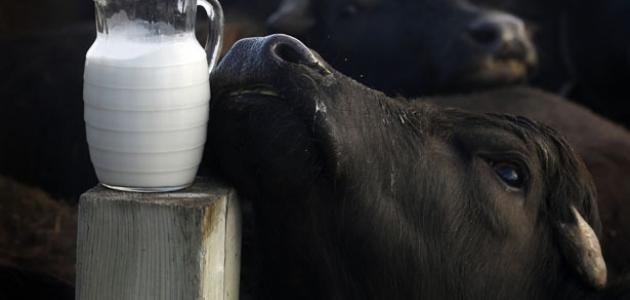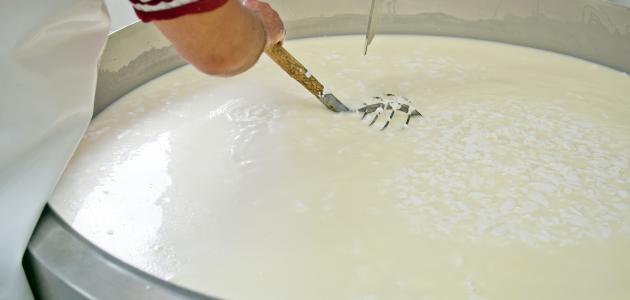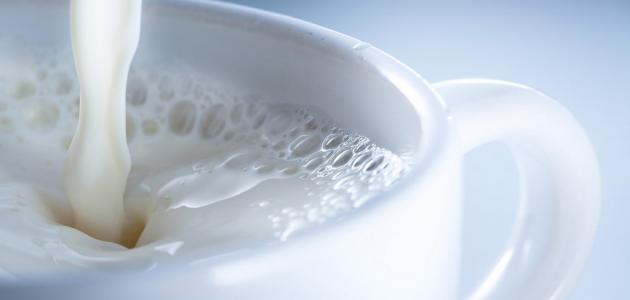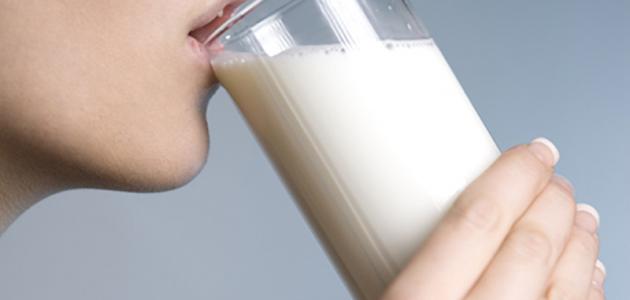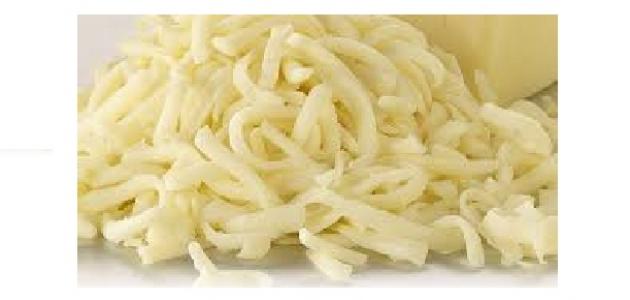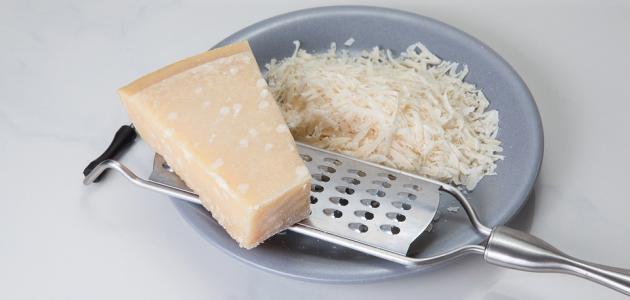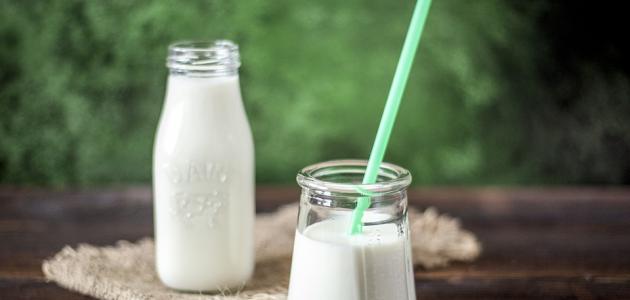Contents
Buffalo milk
Milk is one of the important foods for humans because of its health-beneficial properties. It is also presented as the first food for newborns. Milk can be obtained from cows, goats , sheep, and even buffaloes, [1] and buffalo milk is classified as the second in the world in terms of The quantity of production after cow's milk, as it constitutes 12% of the amount of milk production worldwide, and is characterized by its composition and functional characteristics that make it suitable for the production of many dairy products, such as; Cream made using high temperatures, ice cream, casein protein and its products, and bleaches made from dairy, and compared to cow's milk, buffalo milk contains more calcium, phosphorous, fats, proteins, and lactose than those in Cows' milk. [2]
The nutritional value of buffalo milk
The following table shows the nutrients in 100 grams of Indian buffalo milk: [3]
| The foodstuff | Nutritional value |
|---|---|
| Calories | 97 calories |
| water | 83.39 milliliters |
| Protein | 3.75 grams |
| Fats | 6.89 grams |
| Carbohydrates | 5.18 grams |
| Dietary fiber | 0 gr |
| Calcium | 169 milligrams |
| Iron | 0.12 milligram |
| magnesium | 31 milligrams |
| Phosphorous | 117 milligrams |
| Potassium | 178 milligrams |
| Sodium | 52 milligrams |
| Zinc | 0.22 milligrams |
| Copper | 0.046 milligrams |
| Manganese | 0.018 milligram |
| Vitamin B1 | 0.052 milligram |
| Vitamin B2 | 0.135 milligram |
| Vitamin B3 | 0.091 milligrams |
| Vitamin B5 | 0.192 milligrams |
| Vitamin B6 | 0.036 milligrams |
| Vitamin B9 | 6 micrograms |
| Vitamin B12 | 0.36 mcg |
| Vitamin A | 178 international units |
The benefits of buffalo milk
Buffalo milk provides many health benefits as it is a source of some nutrients, including:
- Rich source of protein: buffalo milk contains a greater amount of proteins compared to that found in cow's milk, and the consumption of protein- rich milk increases the feeling of satiety, which may help to reduce the amount of food consumed during the day, lose weight, and fats, as this milk contains Casein protein, which constitutes 89% of its total protein content, and it is worth noting that the peptides derived from casein have several health benefits, according to what preliminary studies conducted on mice have shown that they have a role in increasing bone formation, density and strength, in addition to reducing the process Bone resorption, or what is known as breaking down the bones, in order to draw minerals from them and transfer them into the blood. [4]
- A laboratory study, the results of which were published in the European Journal of Nutrition in 2018, indicated that the content of peptides in the casein protein found in buffalo milk increases the differentiation of a bone protein known as osteocalcin in the osteoblast cell as well as the deposition of minerals in it. It reduces the risk of osteoporosis, and these peptides derived from casein can be used as one of the important ingredients in preparing functional foods that reduce this fragility. [5] Another preliminary study in mice with osteoporosis and published in the journal Nutrition in 2017 showed that these peptides improve bone mineral density. As it raises the level of calcium and phosphorous in it, increases its strength, and reduces the level of cytokines associated with the occurrence of osteoporosis, among others. [6]
- A rich source of vitamins and minerals: such as: vitamin B6, vitamin A , and vitamin B2 , [7] in addition to providing 41% of the daily amount of food that the body needs from phosphorous, 32% from calcium, and 19% from magnesium. [4]
- A rich source of immunoglobulins: Buffalo milk contains more immunoglobulins compared to those found in cow , goat, and breast milk, and these immune globulins contribute to reducing the risk of infection in newborns, according to a review published in Food Control in 2015. 2014. [8]
- A source of antioxidants: A study published in Lipids in Health and Disease in 2017 indicated that buffalo milk is a source of many antioxidant nutrients, such as; Vitamin C, vitamin A, vitamin E, selenium, linoleic acid, and other fatty acids, and its content also increases some of them, such as; Vitamin C is more than that available in cow's milk, or when it has been pasteurized, and it is recommended to consume pasteurized milk within 3 days of putting it in the refrigerator to get the largest possible amount of antioxidants it contains. [9]
Damage to buffalo milk
The degree of safety of buffalo milk
There is no information available about the degree of safety of buffalo milk, but it should be noted that unpasteurized milk is considered unsafe, [10] due to the possibility that it contains dangerous microorganisms, such as; Salmonella, Escherichia coli , and Listeria bacteria, which have a negative impact on health, especially in children, when consuming unpasteurized milk, [11] and therefore it is necessary to drink pasteurized or high-temperature milk, which is sometimes called long-life milk. Unpasteurized milk, it must be exposed to heat until it reaches a boil, and avoid consuming it without being pasteurized and heated. [12]
Precautions for using buffalo milk
Some people with cow's milk allergy also suffer from an allergy to buffalo milk, but there is not enough evidence to prove this information. [4] Common symptoms of milk allergy include the following: urticaria, wheeze, itching or a feeling of numbness around the mouth or Lips, swelling of the lips, tongue, or throat, shortness of breath or coughing, vomiting. [13]
References
- ↑ Dhartiben Kapadiya, Darshna Prajapati, Amit Jain and others (7-2016), “Comparison of Surti goat milk with cow and buffalo milk for gross composition, nitrogen distribution, and selected minerals content , ” www.ncbi.nlm.nih.gov , Retrieved 26-6-2020. Edited.
- ↑ Chandraprakash Khedkar, Shrikant Kalyankar, Shital Deosarkar (1-2016), "Buffalo milk" , www.researchgate.net , Retrieved 26-6-2020. Edited.
- ↑ "Milk, indian buffalo, fluid" , www.fdc.nal.usda.gov , 4-1-2019, Retrieved 6-6-2020. Edited.
- ^ A b v the Ariane Lang (5-2-2020), "Trade shows All You To Know View About Ticket Support Need the Buffalo Milk" , Www.healthline.com , Retrieved 27-6-2020. Edited.
- ↑ Srinu Reddi, Venkatesa Shanmugam, Kemgang Tanedjeu and others (3-2018), “Effect of Buffalo Casein-Derived Novel Bioactive Peptides on Osteoblast Differentiation” , European journal of nutrition , Issue 2, Folder 57, Page 593-605. Edited.
- ↑ Sanusi Mada, Srinu Reddi, Naveen Kumar, And Others (12-2017), “Antioxidative Peptide From Milk Exhibits Antiosteopenic Effects Through Inhibition of Oxidative Damage and Bone-Resorbing Cytokines in Ovariectomized Rats” , Nutrition , Issue -, Folder 43--44 , Page 21-31. Edited.
- ↑ "MILK AND DAIRY PRODUCTS IN HUMAN NUTRITION QUESTIONS AND ANSWERS" , www.fao.org , Retrieved 27-6-2020. Edited.
- ↑ W. Claeys, C. Verraes, S. Cardoen and others (2014), “Consumption of raw or heated milk from different species: An evaluation of the nutritional and potential health benefits” , Food Control , Folder 42, Page 188-201 . Edited.
- ↑ Imran Khan, Muhammad Nadeem, Muhammad Imran and others (24-8-2017), "Antioxidant capacity and fatty acids characterization of heat treated cow and buffalo milk" , Lipids in Health and Disease , Issue 1, Folder 16, Page 163. Edited.
- ↑ "Risks associated with consuming raw milk" , www.dairysafe.vic.gov.au , Retrieved 6/27-2020. Edited.
- ↑ "Pasteurized Milk: Myths and Proven Facts" , www.healthychildren.org , 12-29-2011, Retrieved 27-6-2020. Edited.
- ↑ “Foods to avoid when pregnant” , www.pregnancybirthbaby.org.au , 7-2018, Retrieved 27-6-2020. Edited.
- ↑ "Milk allergy" , www.mayoclinic.org , 12-6-2020, Retrieved 27-6-2020. Edited.
